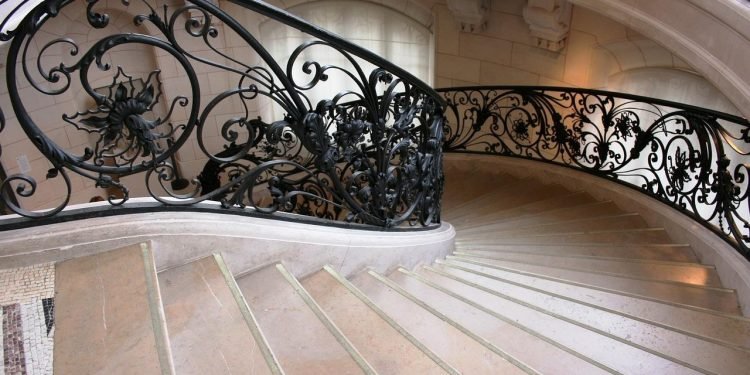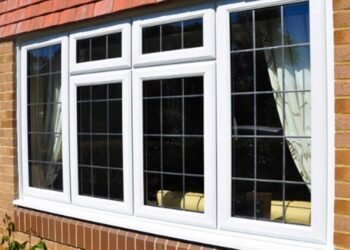The possibilities for stair railing designs are virtually limitless, offering various design combinations. A popular choice for a custom built hand railings design involves the use of balusters, which form the balustrade. Balusters play a crucial role in the overall design of the railing, serving as one of its most essential features. By incorporating different types of balusters, you can create a stair railing that is not only visually unique but also functional and tailored to your specific needs.
Different Kinds of Balusters Available Today
When it comes to the types of balusters available, the selection varies based on factors such as the environment, the desired look for the staircase, and the materials used. Balusters can come in different shapes, including round, square, flat, rectangular, and even custom-designed forms. Additionally, they can be crafted from a variety of materials, such as metal, wood, stone, wrought iron, and concrete. By carefully considering the environment and aesthetic goals, you can choose the ideal balusters to achieve your desired stair railing design.
Among the popular types of railings for stairs is the baluster style. Baluster styles can encompass a wide range, catering to functional and decorative preferences. On one end, you have the purely functional vertical steel pickets commonly used in commercial or bolted steel stairs. On the other end, ornate and hand-carved stone balusters are reminiscent of those seen in ancient cathedrals. It’s worth noting that a spindle, often mistaken for a baluster, refers to a specific type of long, thin baluster commonly used in staircase construction.
Metal Balusters
Metal balusters offer a wide range of sizes and styles, typically constructed from metal tubes, pipes, rods, or bars. They are frequently utilized in multi-line railing designs for egress stairs. These balusters can be made of steel, aluminum, or wrought iron and are often combined with wood stairs to create architectural elements.
Applications of Metal Balusters
Metal balusters find great suitability in industrial applications. Railings with a center mid-rail, meeting IBC and OSHA building codes, commonly incorporate metal pipe or tube balusters. They are also prevalent in both commercial and residential settings, suitable for both indoor and outdoor use. Hollow tubes and pipes are ideal for interior stairs, while solid rods or bars are better suited for exterior stairs. Commercial picket railing is an example of baluster railing commonly made of metal.
Advantages and Disadvantages of Metal Balusters
Pros
- Strength and Durability: Metal balusters are known for their robustness and longevity.
- Resistance to Elements: They can withstand natural elements well and maintain their integrity even with exposure.
- Versatility in Design: Metal is malleable, allowing for various shapes and designs to achieve desired aesthetics for homeowners or contractors.
- Color Options: With powder coating, metal balusters are available in a range of colors, including satin black and antique bronze.
- Low Maintenance: Metal balusters require relatively minimal maintenance.
Cons
- Corrosion Risk: Except for naturally corrosion-resistant aluminum, most metals are prone to rust unless adequately treated. Steel can be galvanized or powder coated for corrosion protection, while wrought iron balusters can be sealed and coated to prevent rust.
- Cost: Metal balusters generally tend to be more expensive than those made from alternative materials.
Wood Balusters
Wood is a highly popular choice for balusters, especially in traditional and classic staircase designs. Wooden balusters are often associated with a sense of timeless elegance. In contemporary settings, wood balusters can be combined with other materials, such as metal or glass, to create a modern and sophisticated look.
Applications of Wood Balusters
Wooden balusters are commonly used in both residential and commercial building interior spaces, particularly in more traditionally styled homes. However, with proper treatment and maintenance, they can also be utilized outdoors.
Advantages and Disadvantages of Wood Balusters
Pros
- Warmth and Natural Beauty: Wood balusters bring a sense of warmth and natural beauty to the staircase, creating a welcoming ambiance.
- Variety of Wood Species: Numerous wood species, such as red oak and poplar, can be used for balusters. They can be stained or painted to match the surrounding environment, offering versatility in design.
- The versatility of Styles: Wood balusters offer a wide range of design options, encompassing turned, fluted, twisted, braided, square, octagonal, carved, and numerous other styles. This versatility allows for personalized customization, enabling you to achieve a unique and appealing aesthetic for your staircase.
Cons
- Durability: While wood balusters can be long-lasting, especially when varnished or used indoors, they are prone to degradation or rotting over time, particularly if exposed to moisture.
- Vulnerability to Pests: Wood balusters are susceptible to pests like woodworm or termites, especially when used outdoors. Proper pest prevention and treatment are essential.
- Strength: Compared to materials like metal or concrete, wood balusters are not as strong, making them less suitable for high-load applications.
Stone Balusters
Stone balusters have a rich history in staircase design, spanning centuries and cultures. Even today, they continue to be a favored choice for their enduring beauty and style. Both natural stone and precast stone balusters offer a wide range of options to create stunning staircases.
Applications of Stone Balusters
Stone balustrades have adorned magnificent terraces, porches, and sweeping stairways, lending an aura of timeless elegance to architectural masterpieces. In modern times, stone balusters find their place in residential and commercial buildings, such as banks and museums. They are suitable for both indoor and outdoor use, adding a touch of sophistication to any setting.
Advantages and Disadvantages of Stone Balusters
Pros
- Natural Beauty: Natural stone balusters showcase the inherent beauty of the stone itself, while precast stone balusters replicate the look of various stone colors with remarkable accuracy.
- Durability: Natural stone balusters are exceptionally durable, with the potential to last for thousands of years. They require minimal maintenance to retain their appearance and strength.
- Integration with Surroundings: When used outdoors, stone balusters seamlessly blend with the natural landscape, enhancing the overall aesthetic appeal.
Cons
- Installation Challenges: Due to their substantial weight, installing natural stone balusters may pose difficulties and require specialized equipment or professional assistance.
- Cost: Natural stone balusters tend to be more expensive than precast stone options, reflecting the quality and craftsmanship involved.
- Precast Stone Vulnerability: While precast stone balusters emulate the look and texture of natural stone, they are generally less durable and more prone to chipping and cracking when exposed to outdoor elements.
Conclusion
The selection of balusters significantly influences the overall appearance of a staircase. Therefore, it is crucial to carefully choose the appropriate baluster shape, style, and material. Consider your desired aesthetic for the finished stairway, whether it leans towards a traditional or modern feel. Take into account the existing indoor décor or outdoor environment to ensure harmonious integration. Lastly, keep your budget in mind, as the cost of materials can vary significantly. By considering these factors, you can make an informed decision and achieve the desired look for your staircase while staying within your budget.












